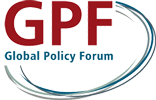Money laundering – a global problem
Money laundering is the legalisation of illicit funds or assets through their introduction into the economic cycle. The illegal funds are often closely linked to organised crime and originate from illegal activities involving arms, drugs, human trafficking, extortion or corruption. Lately, the definition in many places also includes the crime of tax fraud. However, there is no internationally standardised definition of money laundering. One reason is that new ways of implementing money laundering methods can always be found in a globalised world, including Internet-based transfer systems which allow payments to be handled anonymously. These illegal activities carry the risk of undermining legal structures.
Although there are numerous studies on money laundering, its true scope can hardly be measured. According to calculations by the United Nations Office on Drugs and Crime (UNODC), the annual volume amounts to between 800 billion and two trillion $ U.S. (2-5% of the global GDP). According to estimates by the U.S. organisation Global Financial Integrity, this sum includes $ U.S. 723-844 billion in corrupt funds flowing from developing into industrialised countries. According to the Swiss money laundering expert Andreas Frank, of the total money laundered worldwide, less than 1% is confiscated.
